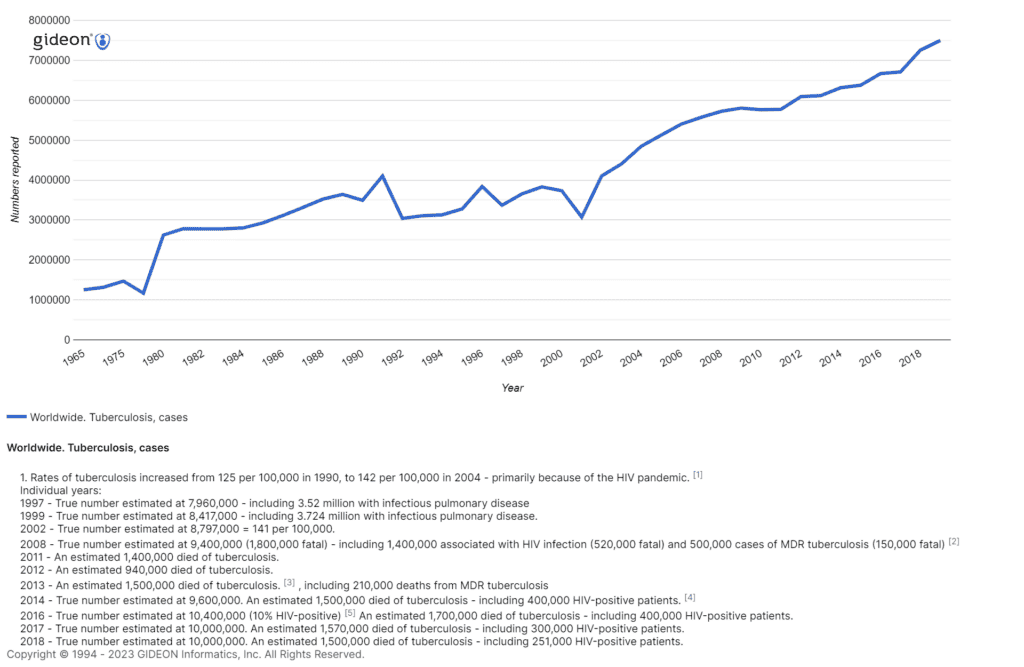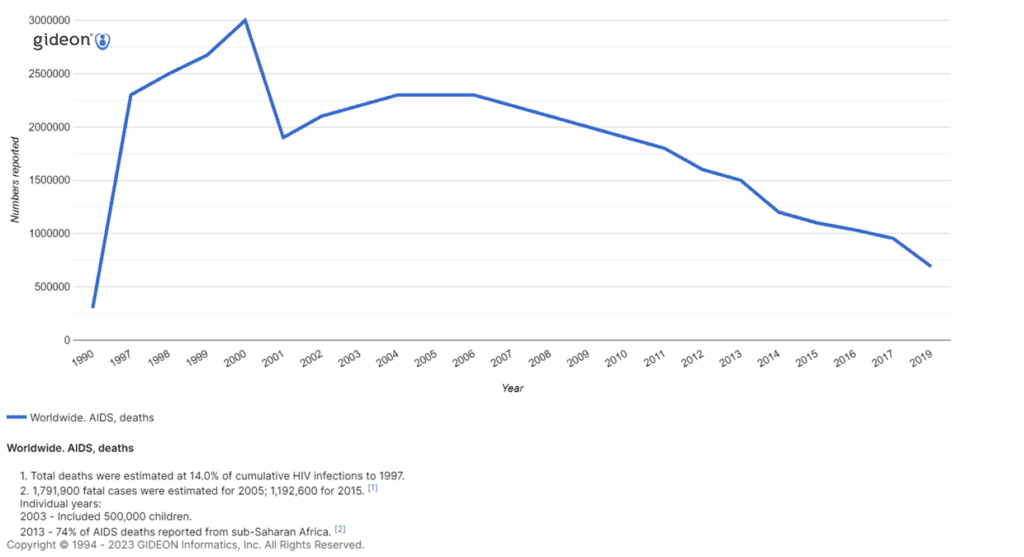Bacteria, viruses, fungi, and parasites are the most common causes of infectious diseases worldwide. Their impact varies from mild to severe and can even be fatal if not treated promptly.
To understand the magnitude of infectious diseases globally, we turn to epidemiology – the study that helps us track disease patterns and their causes across populations.
Some of the most common infectious diseases are:
- Tuberculosis (TB)
- COVID-19
- HIV/AIDS
- Malaria
- Influenza (Flu)
Let’s delve into the top facts about each of these diseases.
 Image courtesy of GIDEON Informatics: Worldwide Tuberculosis cases
Image courtesy of GIDEON Informatics: Worldwide Tuberculosis cases